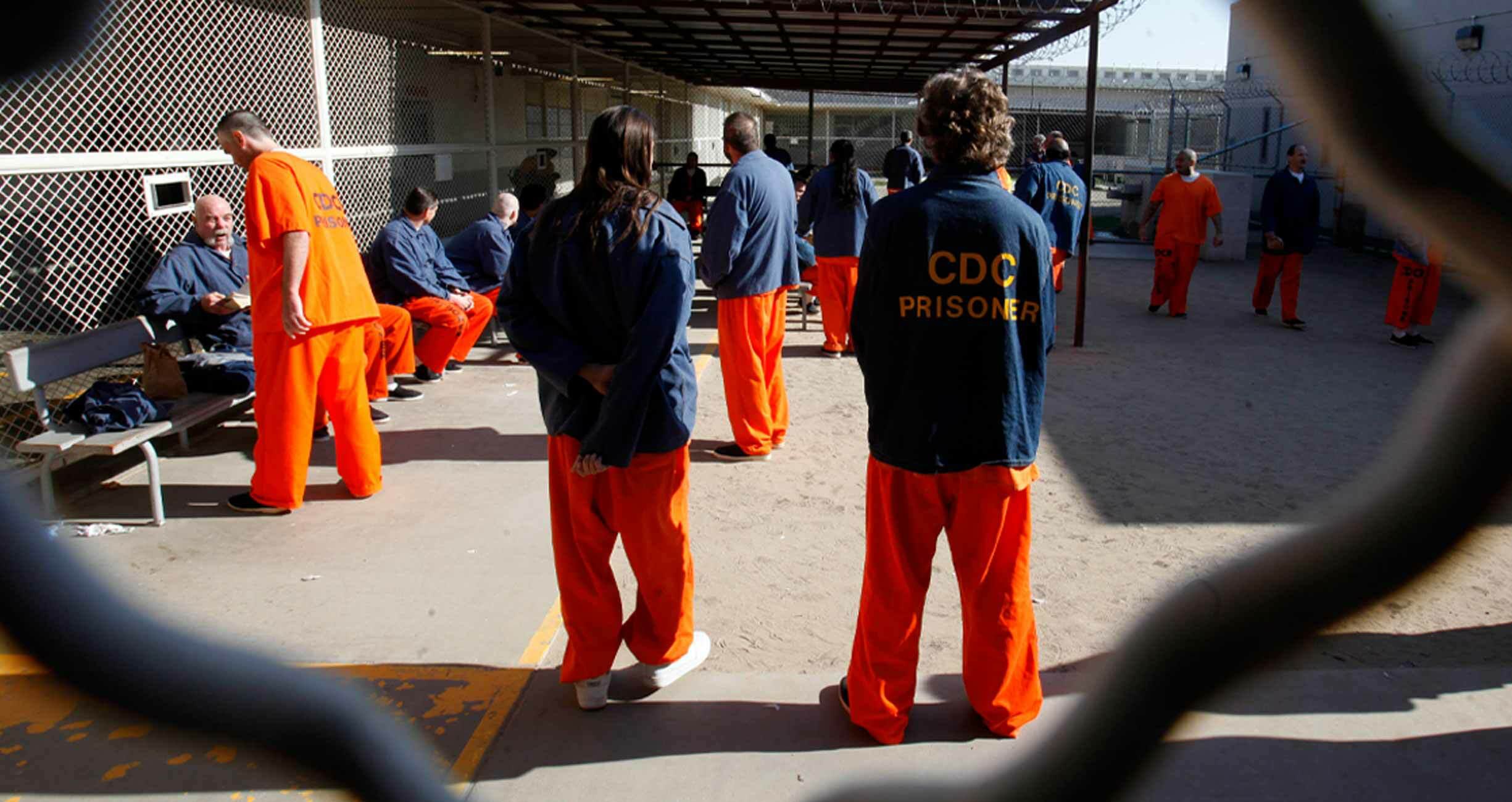The Difference between Jail and Prison

The United States incarcerates nearly two million people, with one of the highest incarceration rates in the world. Most people who are incarcerated are held in jails and prisons across the country. Those words—“jail” and “prison”—are often used interchangeably, but they are very different types of facilities.
Jails, explained
In 2022, the 2,850 local jails scattered across the country held about 658,000 people on any given day. But that already staggering number pales in comparison to the millions of people admitted to jail every year—more than 10.3 million jail admissions were reported in 2019. Data journalist and illustrator Mona Chalabi helps visualize what exactly that looks like in her work for the Prison Policy Initiative.
Eighty percent of arrests that could land people in jail are for low-level misdemeanor offenses, like disorderly conduct and drug abuse. Less than 5 percent of arrests are for violent offenses.
And while jails may hold people who have been convicted of low-level offenses and face sentences to incarceration that are typically less than a year, the vast majority of people in jail—approximately two-thirds—have not been convicted of a crime. Rather, in most cases, they are detained pretrial simply because they cannot afford bail—so, they’re stuck in jail while they wait for their day in court. That day could be weeks, months, or even years away.
Hundreds of thousands of people are detained in jails every year solely because they’re unable to pay bail. It’s one way our criminal legal system criminalizes people experiencing poverty and homelessness.
In the worst cases, people have died while waiting for their day in court. Jails are typically meant to serve as short-term detention facilities, but there are many devastating exceptions. In 2022, 19 people died in New York City jails, many of them while they were at Rikers Island, the country’s most notorious jail complex and the city’s largest. Rikers has been described as “a torture chamber.”
Prisons, explained
About 1.2 million people are currently incarcerated in state and federal prisons.
Prisons are long-term detention facilities, holding people serving sentences to incarceration longer than a year—and it’s usually much longer because the United States sends people to prison for extraordinarily long periods of time. The Sentencing Project found, for example, that as of 2020, one in seven people—or more than 200,000 people—in U.S. prisons was serving a life sentence. That is more than the country’s entire incarcerated population in 1970.
Changes in sentencing law and policy help explain this astronomical rise. “Tough-on-crime” legislation, beginning in the 1970s and culminating with the 1994 Crime Bill, gave rise to overly punitive sentencing legislation at the state and federal levels. A spate of sentencing laws—such as mandatory minimums, three-strikes laws, and life without parole sentences—helped fuel mass incarceration, as the country’s incarceration rate more than tripled from 1971 to 1999.
Curtis Wilkerson is one of the many people sentenced during this time under California’s three-strikes law. He was sentenced to 25 years to life. His crime? Stealing a pair of socks.
What jails and prisons have in common
People in both jails and prisons face cruel and abusive conditions—violence; overcrowding; wholly inadequate health care; unhealthy, processed foods; freezing and sweltering temperatures; and rules that make it almost impossible to stay connected to loved ones.
We pour hundreds of billions in taxpayer dollars into these facilities. But incarceration doesn’t make our communities safer.
Instead, even a few days behind bars can make it difficult for people to keep their jobs or pay rent, making it hard for them to provide for their families. Studies show that even a few days in jail is so destabilizing to people’s lives that it makes it more likely they will be arrested again in the future.
Moreover, a conviction—even for a minor offense—can have lasting and detrimental effects, called “collateral consequences.” These include barriers to accessing education, securing housing, and finding employment. In fact, research shows that a conviction can lead to a lifetime of lower wages.
The criminal legal system’s impact is sweeping. Between 70 million and 100 million people in the United States—about one in three adults—have an arrest or conviction record. And, because of the racial bias inherent in and embedded within every aspect of our criminal legal system, Black people are more likely to be stopped, searched, arrested, and sentenced more harshly than white people.
Ninety-five percent of people in prison will eventually return to their communities. Instead of enabling their success, our criminal legal system mounts barriers that make this transition needlessly difficult. This system prioritizes punishment, not safety and well-being. And its focus, to date, on building out the infrastructure to incarcerate has actually undermined public safety.
Local, state, and federal governments must redirect the billions spent on mass incarceration. Instead, let’s channel those funds toward investments in education, health, housing, jobs, and transportation. These are the investments our communities need—and that we know can actually make us all safer.
